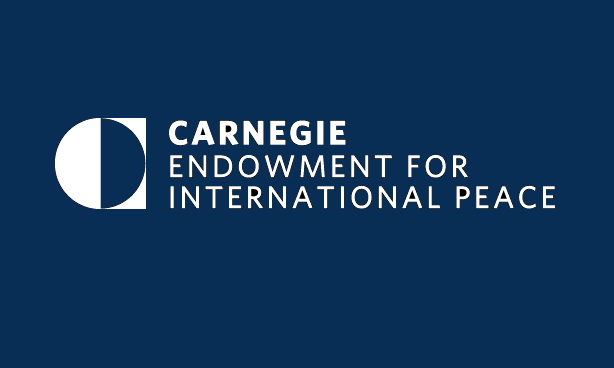Putin's Obsession with Ukraine Has Reached an Unprecedented Level - the Carnegie Endowment for International Peace
11/17/2021

A detailed study of Putin's actions against Ukraine shows that he now has almost all the necessary components and justifications for a military invasion, so Kyiv and Washington have good reasons for concern. This is stated in the analytical material of the Carnegie Endowment for International Peace “Ukraine: Putin's Unfinished Business”.
Domestic and foreign policy trajectories of the Russian leader, who is approaching his seventieth birthday, show that Putin is thinking about his legacy. And there is one important unfinished business, which is still not on the list of his achievements - the restoration of Russia's dominion over key parts of its historical empire. No item on that agenda is more important—or more pivotal—than the return of Ukraine to the fold. For the Russian president and his team, the restoration of the Slavic heartland of the former empire is not just geopolitical. It is also generational, strategic, and personal.
During the two decades at the helm, he has tried and failed repeatedly to restore Ukraine to its—rightful as he sees it—place in Russia’s orbit. The ultimate blow to Putin's ambitions was delivered in 2014. The occupation of Crimea and the beginning of the war in the East of Ukraine advanced his domestic legacy and preserved his tactical leverage of influence. But they backfired strategically in terms of reinforcing Ukraine’s pro-Western orientation and Russia’s international isolation.
According to analysts at the Carnegie Endowment for International Peace, Putin's obsession with Ukraine has reached an unprecedented level in 2021. If the prospect of Russia's re-invasion of Ukraine is realistic and the strategic goal is to force Kyiv into political and geopolitical capitulation, how would Putin want to achieve that? What operational goal would he set?
1. Limits on Foreign Military Activity In and Around Ukraine
Putin’s rhetoric in recent months has begun portraying the exploitation or absorption of Ukraine’s territory by hostile foreign powers as an unacceptable threat to Russian security. Yet the United States and its allies are highly unlikely to agree to negotiate explicit limits on what they can and cannot do in Ukraine. They will not allow Russia to designate Ukraine as a keep-away zone or to impose restrictions on the kinds of weapons that they can supply to its military. Still, Moscow could try to use its threatening military deployments and other forms of pressure short of a direct intervention to artificially elevate tensions in and around the region and to make Ukraine’s partners more hesitant and risk-conscious.
At the same time, the Kremlin’s provocative moves in March and April 2021 showed that its pressure campaign can ricochet. Russian saber-rattling then reinvigorated flagging Western support for Ukraine and strengthened the case for stepped-up U.S./NATO defense cooperation with Kyiv and more visible U.S./NATO military activities and presence in the Black Sea and various NATO frontline countries. As a result, relaxation of Western sanctions is a topic broached by only the most committed pro-Kremlin voices in EU policy circles.
2. Forcible Implementation of the Minsk Accords
The Kremlin’s exasperation at Kyiv’s seven-year-long failure to implement the Minsk accords, which it imposed on Kyiv at the barrel of a gun, may lead it to use force to make Kyiv follow through on provisions of the agreements that have long been political nonstarters for Ukrainian leaders
Depending on the scale of what the Kremlin decides to do, it may assume (perhaps wrongly) that the risks are manageable and that it will be difficult for the Biden administration to rally European support for more sanctions. In addition, Moscow might attempt a modest expansion of the territory it controls in eastern Ukraine under the guise of protecting the civilian population against “Ukrainian attacks” or to use the threat of a larger invasion to compel the withdrawal of Ukrainian forces from specific areas.
3. Bridging the Gap
During earlier phases of the conflict, there was speculation that Moscow might try to expand the territory it controls. Discussion center on possible seizure of the Soviet-era canal that supplies water to Crimea, Mariupol, or the remaining Ukrainian-controlled territory along the Sea of Azov coastline to create a land bridge to the peninsula.
Any such incursion would almost certainly entail the longer-term challenge of administering and maintaining security in newly seized territories. Unlike the previous scenario, an outright expansion of the zone of occupation could make additional U.S.-EU sanctions—perhaps cancellation of the controversial Nord Stream 2 natural gas pipeline, sectoral sanctions against Russian oil and gas firms, or restrictions on state-owned banks, etc.
4. Full-Scale Onslaught
Some analysts speculate that the Kremlin may launch a swift offensive to force the Ukrainian military to retreat beyond the Dnieper. This would allow the Kremlin to control “left-bank Ukraine”, including the historic part of Kyiv, which Putin estimates is an integral part of the great Russian state. Presumably, the Kremlin may even try to establish a puppet government in Kyiv and declare its mission accomplished.
But there are many reasons to be skeptical about whether the Kremlin seeks long-term occupation and management of such a vast territory. The Ukrainian army and insurgent units will almost certainly make this mission as costly as possible for Russia. Even if the occupation takes place, the Biden administration, along with Western Europe, is likely to take steps to punish the Kremlin.
If there is any lesson that Putin and his Kremlin cohort should have learned in the course of the seven years since Ukraine’s Revolution of Dignity, it’s that the annexation of Crimea and the undeclared war in eastern Ukraine have only reinforced the Ukrainian people’s resolve to leave Russia’s orbit and to seek closer ties to the West. Clearly, that lesson has not been learned in the Kremlin, which means that it is guided by a different logic and that its current bout of saber-rattling has to be taken seriously.
